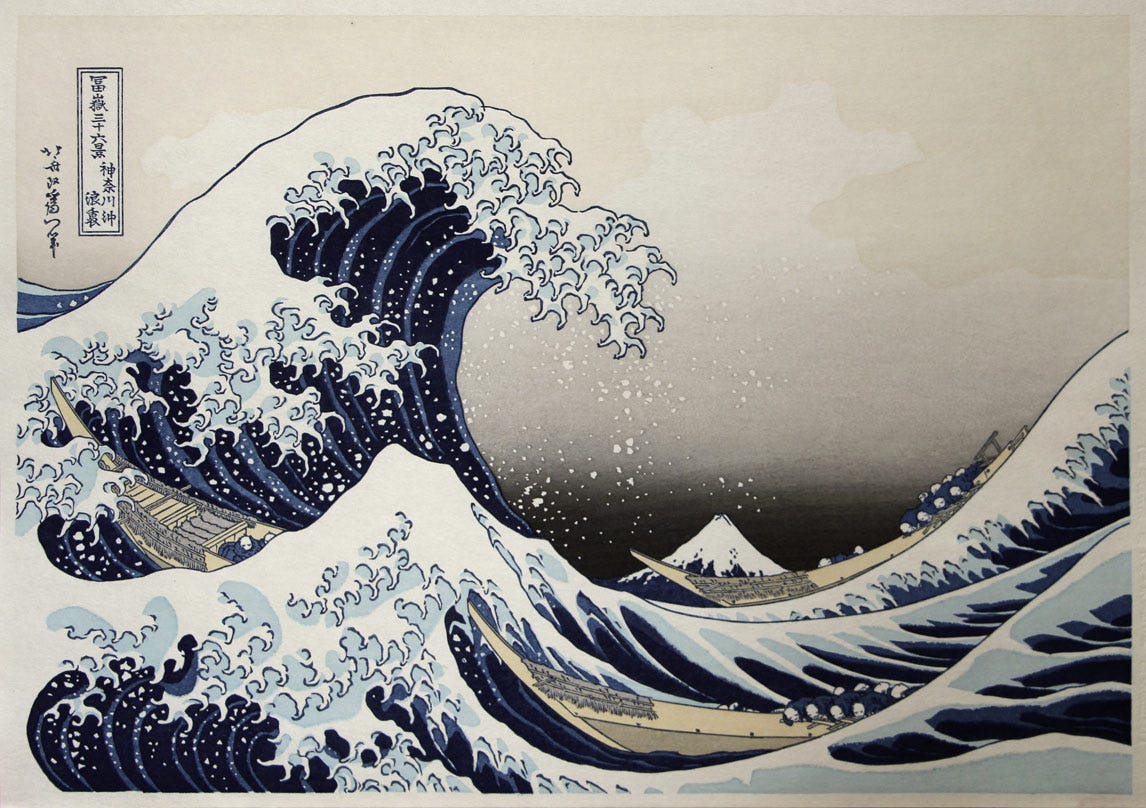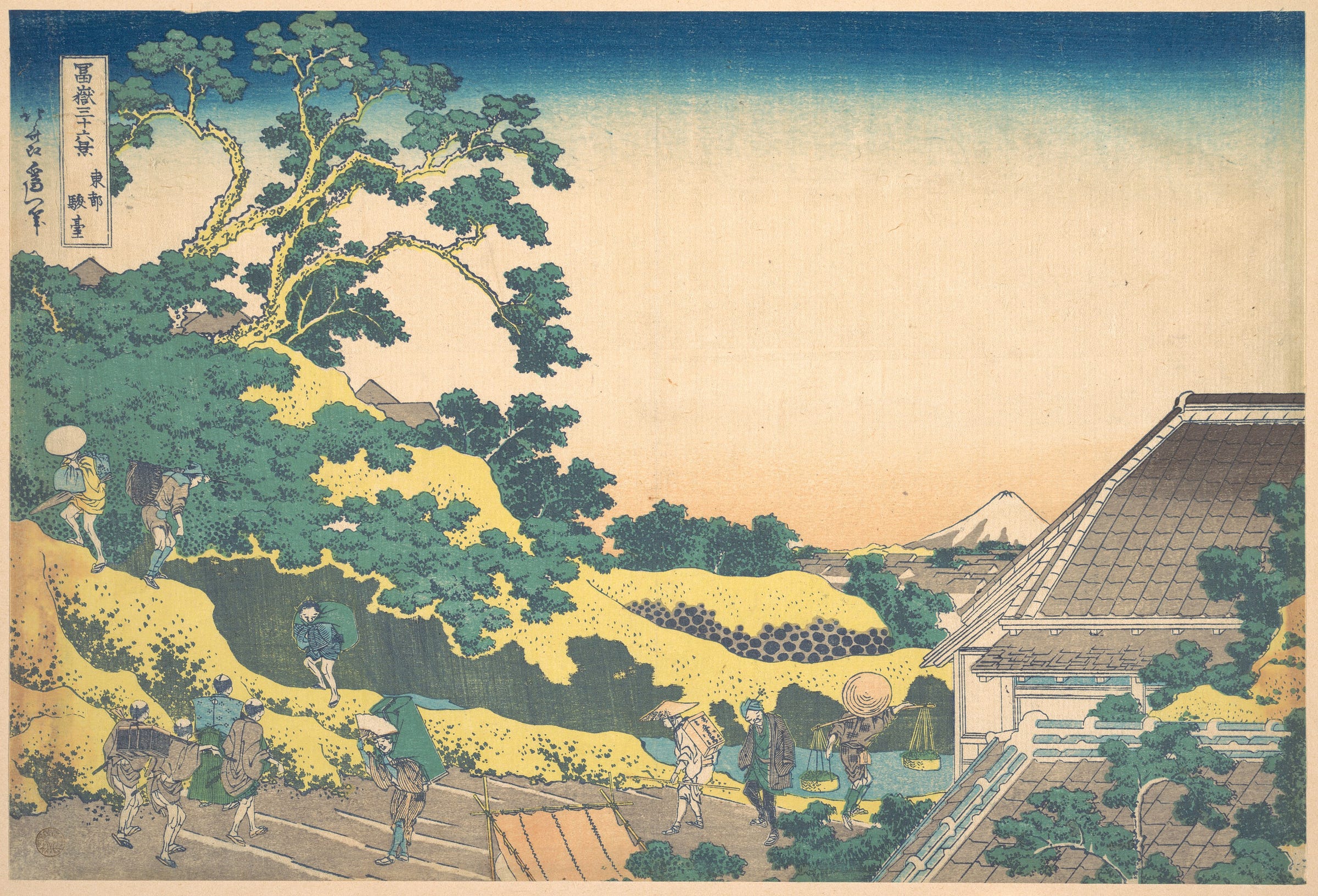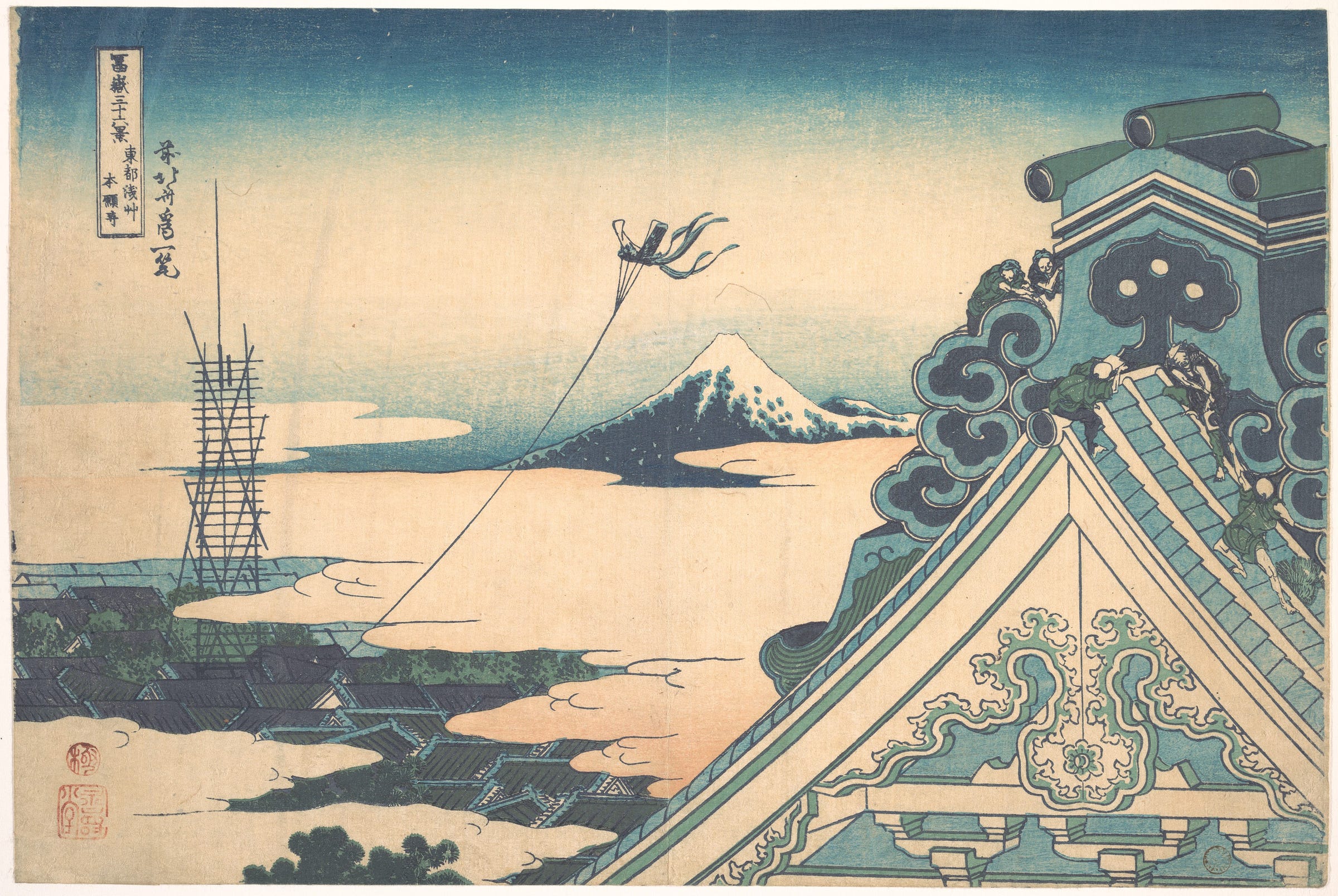For development to be useful and sane, it must be tethered to the reality of our place in nature and the cosmos.
A few weeks ago, I picked up a book of Hokusai’s Manga and was reminded of his brilliance and sheer productivity as an artist. You might know Katsushika Hokusai by the Great Wave wood block print for which he is most famous.

Fewer will know Hokusai as the grandfather of the Manga genre. Initiated through his expansive volumes of wood-block-printed drawings in the Hokusai Manga series, produced in the early 1800’s.
Fewer still, will know Hokusai as the ecological urbanist that I see.
—
Was Hokusai an ecological urbanist?
Of course, Hokusai found a lot of things interesting about his native Japan — the nature of people, of plants, of birds, turtles, farmers. Yet he was also heavily invested in urban landscapes. Indeed, he lived in Edo — current day Tokyo — which was the largest metropolis in the world at the time.
The way Hokusai drew the city however, might feel unusual to those of us who live in modern day cities. Hokusai’s focus was rarely on urbanism itself. Instead, he focused on the city and people in relationship to nature and landscape where they were located.
Let us briefly uncover what that might mean by looking at a few of Hokusai’s works depicting Edo, the bustling city that he called home.
With around 1 million inhabitants, Edo was already larger than London or Paris during Hokusai’s time, and certainly full to the brim with human life and activity. Yet it is pretty clear that this 19th century mega-city did not look like a ‘city’ as we know it today. Especially not from the view of Hokusai, who had a particular eye for scenes that connected humans with the landscape.
The wood block prints shared here are from a well-known series by Hokusai called Thirty-Six Views of Mt. Fuji. Yet these particular views are not from out in the countryside. They are composed within the city of Edo.
Here, Mt. Fuji is certainly the central point of focus, poking up above the clouds — its slope imitated by both the building roof and the kite string. Yet follow that kite string, down in between the clouds and into the mass of rooftops under which dwelled Daimyo feudal lords. Then again, follow the slope of the large roof on the right, up to the people working away on top of it.
For as much nature as there may be, these are also explicitly active, urban scenes.
If we pull back our gaze, we can see how the mountain here is depicted at a lower point on the paper than the building and workers, than the fire watch tower and the kite, all of which in some way frame that view. Yet despite their prominence, these items do not seem more important than Mt. Fuji.
Hokusai chose to arrange all of this action in a way that gives a specific effect. If anything, Hokusai, with very keen sense, shaped the scene as a warm embrace of the mountain. You might say that this is not really an illustration of Mt. Fuji then. It is more like a visual poem, suggesting ways in which the city relates to Mt. Fuji.
All of this was probably an easier conclusion to come to back then.

For as much as the central business and trading districts in Edo spelled ‘urban,’ you can also say that nature still played an incredibly large role in this city. The features that dominated the landscape prior to the city being there were in some ways kept in place, and in other ways shifted or amplified by human intervention. Rivers turned into canals that highlighted views of a distant Mt. Fuji. Forests became places for personal and spiritual retreats. Human-made ponds and waterfalls lined with tea shops sprang up outside of castle walls.
Walking maps for toursits also became a fad in the 1800s, pointing out locations of certain flowers, swimming ponds, and particularly scenic views such as those in Hokusai’s artworks. Even in a tourist boom then, there was a particularly deep appreciation for nature as a main feature in the city.
Through his artworks, Hokusai showed respect for the landscape that gives context to the city. The river corridor on which a home is built, the hills, forests and mountains that protect and nourish the fields where food comes from.
And yet Hokusai’s daughter Katsushika Oi pushed this connection even further in her own artworks. With views of lantern-lit streets, the moon, and stars, Oi manages to include not only the Earthly landscape, but the universe that we find ourselves floating through on this Earth. Painting by lamplight under cherry blossoms and stars, the city is suddenly put in context of the cosmos—a reminder of our place in a much larger natural order.
It is easy to see how our cities have lost a lot of these reminders — both the regional landscapes and the dark night skies that make our place in the cosmos clearly visible. Looking at Hokusai’s urban landscapes — and those of his daughter Oi — reignites our sense, suggesting how we might get these reminders back. Of who we are. Of where we are. Of what is possible.
If the work of Hokusai and Oi shows us how to cherish the various ways that our cities intertwine with these wider realities then, they also give us hints, for how development and a respectful view of nature might go hand in hand.
It’s all in the view, as they say.
—
Another Story: Speaking of darkness in cities, this story from a few years back takes us to a town where people say they have front row seats on the edge of the universe…
—
Thanks for reading The Possible City this week. Remember to share, like, and subscribe if you are not already signed up.
If you are already signed up for the list, and want to help this tiny one-person production survive, the best way to do that is to join the club of paid subscribers who are the patrons of my work.









Who paints cherry blossoms by night? Can you imagine? Swoon. We were in Japan for a couple of weeks with no sightings of Mt.Fuji. When I complained of this, my sister-in-law pointed a spot near her house in Kawasaki where Fuji-san could be seen and the moment I saw the silhouette, I was struck. Such a presence. No wonder Hokusai represented Fuji-san so much. Patrick, I appreciate the world you are advocating for. I'd like to live in it. A place of stars and chairs to rest in and more trees and interdependence. <3